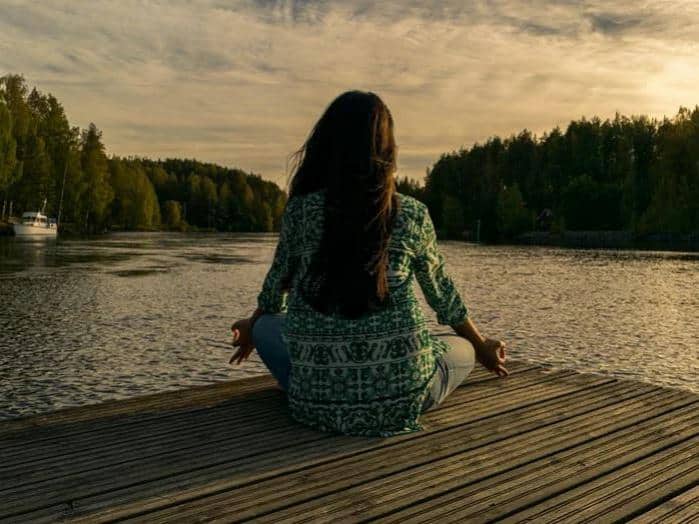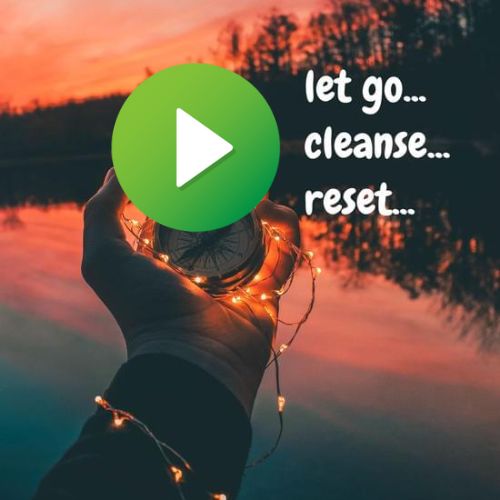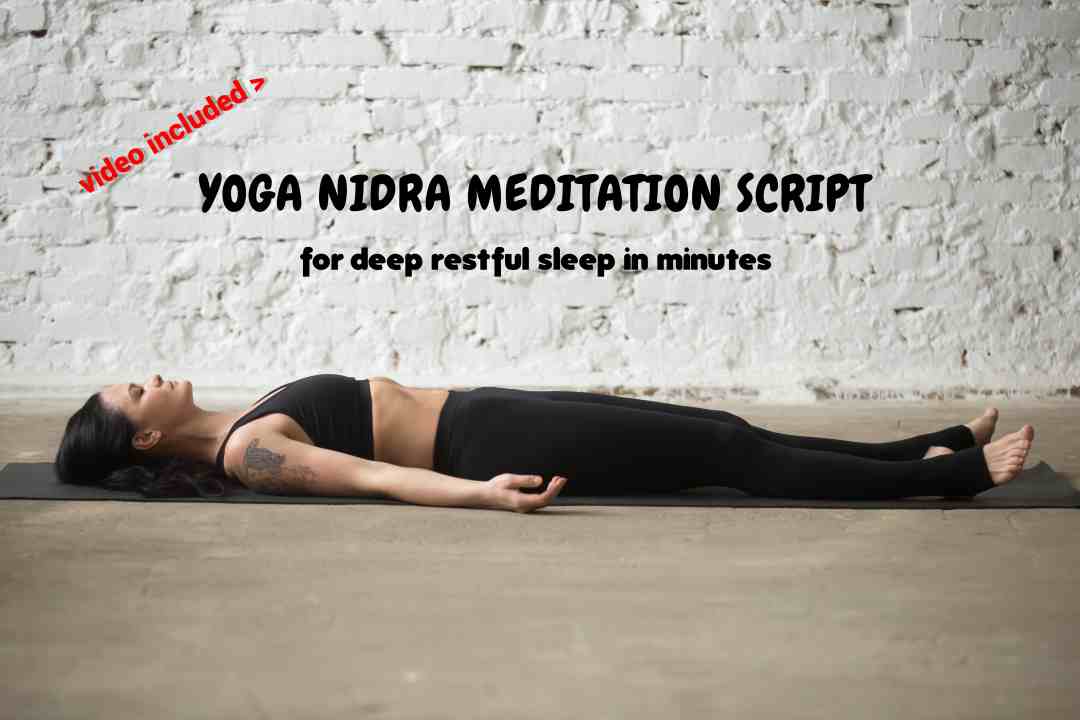Bhastrika (भस्त्रिका ) is a Sanskrit language word meaning ‘Bellows’. The characteristic of Bhastrika Pranayama (Bellows Breath) is a rapid succession of forcible expulsions. Best way to understand Bhastrika Pranayama is by comparing it to a blacksmith blowing his bellows rapidly. Therefore, it is the best Yogic practice to help cleanse the nervous system and Nadis before awakening the kundalini.
Sometimes, by just a few rounds of Bhastrika Pranayama (bellows breath), you can purify the Nadis by stirring the Kundalini. You will feel your entire body charged with new energy. Thus, your whole spinal cord will pulsate.
(Later in the article, I have listed down Bhastrika Benefits, Precautions, the best time to do, how many times to do and who should avoid it).
How and Why to do Bhastrika (भस्त्रिका )Pranayama (Bellows Breath) – Step by Step
Bhastrika Pranayama is the best exercise for the vascular and nervous system. Also, helps you tone your entire nervous system.
Moreover, bellows breathing helps increase circulation all over your body. Also, increases your body temperature, followed by lowering your body temperature due to perspiration. As a result, it eliminates all impurities.
As soon as the physical impurities of your body get cleared – your mind’s concentration power tends to rise to a very high degree. Due to the rapid motion of bhastrika pranayama – there is fresh blood supply to the brain. A few rounds of Bhastrika kriya are enough for you to see how clear your brain becomes. Thus, Bhastrika Pranayama has both psychic and physical benefits – only understood once you experience it.
In Bhastrika your entire respiratory system is put into full action – where the diaphragm plays a vital role. Always learn the proper technique of Bhastrika to avail the real and vast benefits of this bellows breathing exercise.
Step 1:
To start Bellows Breathing – sit in a comfortable position with your spine straight. Preferably in a meditative pose – cross-legged or in a lotus pose. You can keep your eyes open and look straight ahead. Moreover, keep neck, shoulders and head relaxed yet straight. Most importantly your spine should be straight for the energy to flow through it smoothly.
For those of you who cannot sit on the floor mat – please feel free to sit on a chair as long as your feet as flat on the floor.
Step 2:
(Your hands are used to help you in your breath. It syncs your body and your breath)
Next, you bend your elbows to bring your palms next to your shoulders. Now, make a fist of your palms. As you inhale lift your arms straight up to head level. Always, open your fist as you extend your arms upwards. As you exhale you bring your hands down and close your fists. Concentrate on your breath while doing so.
Breathe through your chest and diaphragm.
Remember, it brings your entire respiratory system and diaphragm into quick action. While doing so it is normal to feel the noise in the head and throat.
Note: If you are a beginner – start with rapid expulsions of breath, following one another in rapid succession at least 10 times. To begin with, you could practise Bhastrika without raising your hands. Watch Video for all 3 Types of Bhastrika – Click here.
Step 3:
After the tenth expulsion is over, it is followed the deepest possible inhalation. Once you inhale hold the breath as long as you can comfortably.
Most importantly, during breath retention, apply the chin lock and anal contraction while you concentrate on the kundalini shakti at the lowest spinal centre (also called the Muldhara Chakra).
Step 4:
After holding the breath exhale through the right nostril.
Thus, the above four steps complete one round of Bhastrika Pranayama (Bellows Breath).
Step 5:
Rest for a bit after the first round of Bhrastika Pranayama by taking a few normal breaths. You can start another round in the same manner as Step1,2,3 and 4.
Note: Remember, you can gradually increase the number of expulsions starting from 10 and going up to 30 in each round. Beginners should start with 3 rounds and you can go up to eight rounds of Bhastrika Pranayama. Never overdo this exercise.

भस्त्रिका / Bhastrika Pranayama Benefits:
- Relieves inflammation of the throat
- Increases gastric fire
- Destroys phlegm
- Removes diseases of the chest and eradicates asthma.
- It gives you a good appetite.
- Bhastrika Pranayama also helps awaken the kundalini.
- All diseases arising due to excess phlegm, bile and wind are removed.
- It gives sufficient warmth to the body.
- It purifies the nadis.
Most importantly, during Bhastrika Pranayama the number of exhalations of rounds depends on the strength of the person practising it. Never, go to the extreme for best results.
Always follow your Bhastrika Pranayama practice by Alternate Nostril Breathing or Anuloma Viloma. After this, you can proceed to Kapalabhati.
Precautions while practising Bhastrika Pranayama
- Bhastrika Pranayama (Bellows Breath) is best done at the start of the pranayama and followed by Anuloma Viloma. Normally, when you do this kriya in the colder months – it ignites the fire within your body making it warm and emergetic. Moreover, if you suffer from low BP and your body type is Kapha type you can practise Bhastrika in summers as well.
- Never practise Bellows Breath on a full stomach or in the night before sleeping. Because it charges up your nervous system would deter you from sleeping.
- For those of you suffering from hypertension, high blood pressure, hernia, heart issues, fresh after surgery, during pregnancy; should never try Bhastrika Pranayama.
- In case you are experiencing a migraine attack – refrain from doing Bhastrika.
Remember, Bhastrika Pranayama (Bellows Breath) is one of the unique breathing techniques to bring balance to the three doshas in your body – Vata, Pita and Kapha.
Click here to know your Ayurvedic Body Type – Vata, Pita or Kapha
How many times to do Bhastrika (भस्त्रिका )?
For beginners,
you could do the breathing without raising your hands. The number of times you inhale and exhale should be 10. It completes 1 round. You can do 3 such rounds.
For advanced practitioners,
You could do inhales and expulsions for 15-20 times in each round. Total number of rounds should be maximum 3. Never overdo this exercise.
Hope the above article helps you understand how to do Bhastrika Pranayama (Bellows Breath). In case you have any queries please write in the comments section for a quick reply.
What is the best time to do Bhastrika (Bellows Breath)?
Always try and do Bhastrika in the morning before you do Anuloma Viloma (alternate nostril breathing). Make sure your stomach is empty. If you have a routine where you have to be awake in the night then you can practise Bhastrika in the evening – as long as your stomach is empty.
Video on How to do Alternate Nostril Breathing or Anuloma Viloma:
Video on How to do Kapalabhati:
Pranayam Part 2 Anulom Vilom easy breathing exercise for calm relaxation
How to do the Lotus Pose (Padmasana) – Steps, Precautions, Variations







